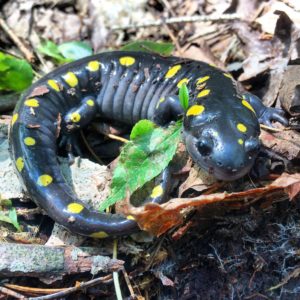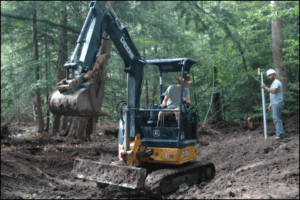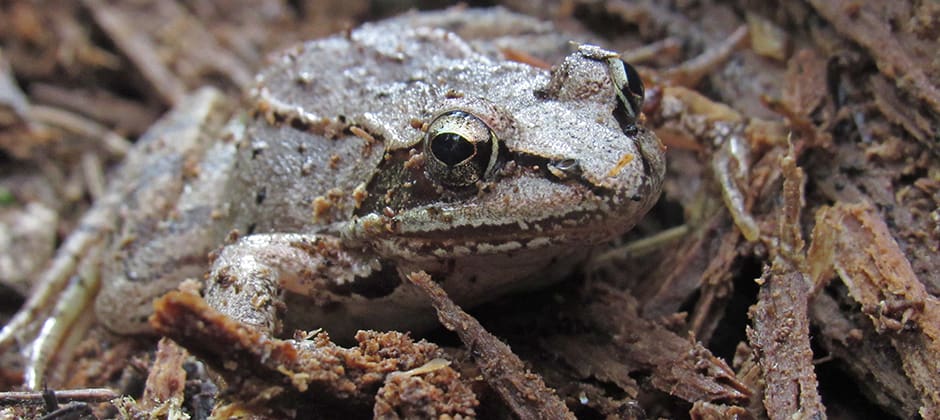Share this article
Spotted salamanders prefer legacy forests
Forests on land previously used for agriculture or grazing, known as secondary forests, may be less suitable for long-lived salamanders.
While new research shows that large numbers of vernal pools may encourage both spotted salamanders (Ambystoma maculatum) and wood frogs (Lithobates sylvaticus) to move into new areas, older forests may attract more of the former.
“We wanted to fill in these gaps on habitat augmentation for pool breeding amphibians and to better assess what landscape design specifications are necessary to have a successful outcome,” said Harrison Goldspiel, a research support specialist at the State University of New York’s College of Environmental Science and Forestry (SUNY-ESF) and the lead author of a study published recently in Global Ecology and Conservation.

Spotted salamanders do better in legacy forests, seen at the right, than they do in secondary forests, shown to the left. ©Harrison Goldspiel
SUNY-ESF researchers have been working to augment amphibian habitat in research areas of the Heiberg Memorial Forest since 2010. They created their own vernal pools by digging holes in the forest floor and allowing them to fill with rainwater. Goldspiel and his co-authors wanted to see how wood frogs and spotted salamanders responded to areas with different numbers of pools as well as with different types of forest — older legacy forests and secondary forests, used for agriculture or grazing 50-80 years earlier.
They examined 29 hexagonal plots, surveying for juvenile and adult amphibians during the summers of 2016 and 2017.
They found that overall, both wood frogs and spotted salamanders were more likely found in the hexagonal plots with greater numbers of vernal pools. But when it came to comparing legacy forests versus secondary forests, they found the two amphibian species differed. The distribution of wood frogs didn’t seem to be affected by the type of forest while the spotted salamanders were more likely to occur in the legacy forests than in the secondary.

A spotted salamander. ©Harrison Goldspiel
Goldspiel said the researchers aren’t sure why, but he speculates that it might have to do with the different ecology of the two species. Wood frogs live shorter lives, but may disperse farther on average than the longer-lived spotted salamanders.
It may also be due to other forest characteristics. Legacy forests have deeper leaf litter and more features like fallen trees or decomposing logs than secondary forests, which all may play an important role for spotted salamanders, which spend much of the year underground.
The different forest types may also attract different types of predators that feed on salamanders. It may also attract small mammals, which can affect salamanders’ shelter. Spotted salamanders often rely on the burrows dug by small mammals for dens, and if these animals are less common in secondary forests, it could have an effect on the amphibians.

A vernal pond being built. ©SUNY-ESF
This knowledge could help conservationists create better habitat for amphibians in the future, Goldspiel said. Building vernal pools in areas with a greater concentration of legacy forest might be more worthwhile for some amphibians than building them in isolated secondary forest areas.
“Access to legacy forests can have a really important impact on these projects,” he said.
Header Image: Wood frogs didn’t show much preference between legacy and secondary forest areas. ©Noah Garwood








